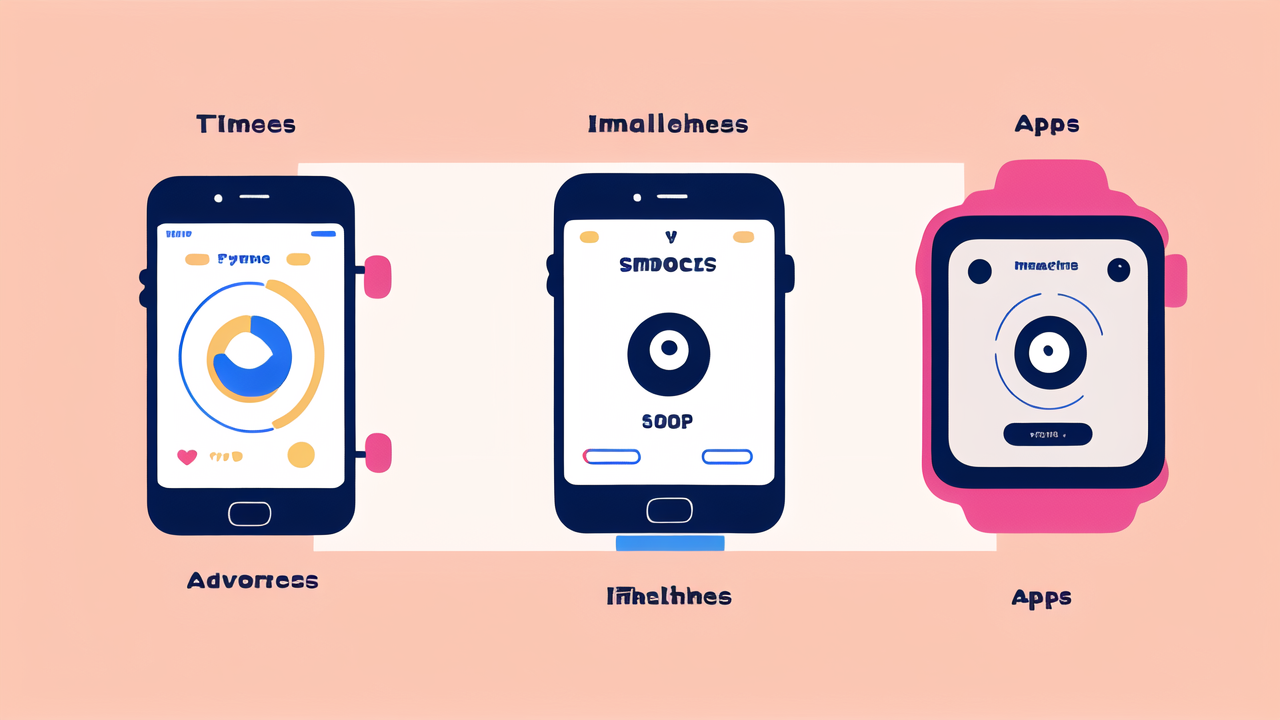The Journey of Wearable Technology: A Historical Perspective
The Early Days of Wearable Tech: Basic Timepieces
Wearable tech's journey began with simple timepieces. Early watches were bulky and often inaccurate. They evolved from pocket watches to wristwatches in the late 19th century. These early wearables focused solely on telling time. They were mechanical, requiring regular winding to function. As technology advanced, so did timekeeping devices. Quartz watches emerged in the 1960s, offering improved accuracy. Digital watches followed in the 1970s, adding features like stopwatches and alarms. These advancements laid the foundation for future wearable technology.

Advancements in Wearable Tech: Health and Wellness Integration
The integration of health features marked a significant leap in wearable tech. Early fitness trackers appeared in the 1980s, measuring basic steps. The 2000s saw a boom in health-focused wearables. Devices began monitoring heart rate, sleep patterns, and calorie burn. Pulse watches became popular among fitness enthusiasts. These devices used optical sensors to measure heart rate from the wrist. As technology improved, wearables added more health features. Blood oxygen monitoring, ECG readings, and stress tracking became common. This evolution transformed wearables from simple timepieces to comprehensive health tools.
The Role of Mobile Apps and Connectivity
Mobile apps and connectivity revolutionized wearable tech. Smartphones became the hub for wearable data. Apps allowed users to view, analyze, and share their health information. Bluetooth technology enabled seamless device-to-phone communication. This connectivity expanded the capabilities of wearables. Users could receive notifications, control music, and even make payments. Cloud integration allowed for data storage and long-term trend analysis. Social features in apps encouraged competition and motivation. The synergy between wearables and smartphones created a powerful ecosystem. It transformed how we interact with technology and monitor our health.
Current Trends in the Wearable Tech Industry
Smartwatches Leading the Market: Innovations and Features
Smartwatches dominate today's wearable tech market. They combine traditional timekeeping with advanced features. Modern smartwatches offer:

- Health monitoring (heart rate, ECG, sleep tracking)
- Fitness tracking (steps, workouts, GPS)
- Notifications and communication
- Mobile payments
- Voice assistants
- Music control and storage
Major tech companies compete to innovate in this space. Apple, Samsung, and Garmin lead with feature-rich devices. Smartwatches now function as extensions of our smartphones. They provide convenience and health insights at a glance. The focus is on improving battery life and adding new sensors. Some watches now offer blood pressure monitoring and body composition analysis. The smartwatch market continues to grow and evolve rapidly.
The Rise of Fitness and Lifestyle Wearables
Fitness-focused wearables have gained immense popularity. These devices cater to specific health and workout needs. Examples include:
- Fitness bands for basic activity tracking
- Sport-specific watches for running, swimming, or golf
- Smart rings for sleep and activity monitoring
- Posture correctors and smart clothing
These wearables often offer longer battery life and specialized features. They appeal to users who prioritize specific health aspects. Many integrate with larger ecosystems of fitness apps and services. Some devices focus on recovery, measuring metrics like HRV and sleep quality. The trend is towards more specialized, niche wearables for different lifestyles.
Impact of AI and Machine Learning on Wearable Devices
AI and machine learning are transforming wearable technology. These technologies enable:
- More accurate health predictions
- Personalized fitness recommendations
- Advanced sleep analysis
- Stress detection and management
- Early warning signs for health issues
AI algorithms process vast amounts of user data. They identify patterns and provide actionable insights. Machine learning allows devices to improve accuracy over time. It adapts to individual user habits and physiology. AI-powered assistants in wearables offer personalized coaching and reminders. The integration of AI is making wearables smarter and more proactive in health management.
The Future of Wearable Technology: Predictions and Potential
Integrating AI for Personalized Experiences
The future of wearables lies in hyper-personalization through AI. Devices will learn from user behavior and health data. They'll offer tailored recommendations for diet, exercise, and sleep. AI will predict health issues before symptoms appear. Wearables might suggest when to take a break or hydrate based on real-time data. They could adjust workout plans based on recovery status and stress levels. AI assistants will become more conversational and context-aware. They'll provide health advice that considers the user's full lifestyle and medical history. This level of personalization will make wearables indispensable health companions.

The Role of Virtual Reality and Augmented Reality in Wearables
VR and AR are set to revolutionize wearable tech. Smart glasses will overlay useful information in our field of view. They could display navigation, fitness stats, or health alerts. VR headsets will offer immersive fitness experiences and mental health therapies. AR contact lenses might provide subtle, hands-free information access. These technologies will blur the line between digital and physical worlds. They'll offer new ways to interact with health data and receive guidance. VR and AR wearables will transform how we work, exercise, and manage our health.
Ethical Considerations in Wearable Tech Development
As wearables become more advanced, ethical concerns arise. Privacy is a major issue, as devices collect sensitive health data. There's a need for robust security measures to protect user information. The accuracy and reliability of health insights raise medical concerns. There's a risk of over-reliance on wearables for health decisions. Equity in access to advanced health tech is another consideration. Developers must ensure wearables don't exacerbate health disparities. There's also the question of data ownership and user control. Ethical guidelines for AI in health tech need to be established. Balancing innovation with user protection will be crucial for the future of wearables.




Leave a comment
This site is protected by hCaptcha and the hCaptcha Privacy Policy and Terms of Service apply.